Highlights—
|
Spreadsheets are still a critical tool, but manually entering data is a productivity killer. Advanced AI models can now complete the task for you with uncanny precision – parsing unstructured data from emails and PDFs, computing complex formulas based on spoken instructions, standardizing row-level data, even predicting future trends.
These solutions extend beyond simple autofill to sync live data between business apps and craft dynamic workflows. Results after testing thousands of data points.
After months of rigorous testing using thousands of data points, we have found the most dependable AI tools that can actually help save time for businesses and professionals.
This guide showcases the leading solutions to automate your spreadsheets and eliminate human errors, enabling you to turn laborious data work into strategic analysis.
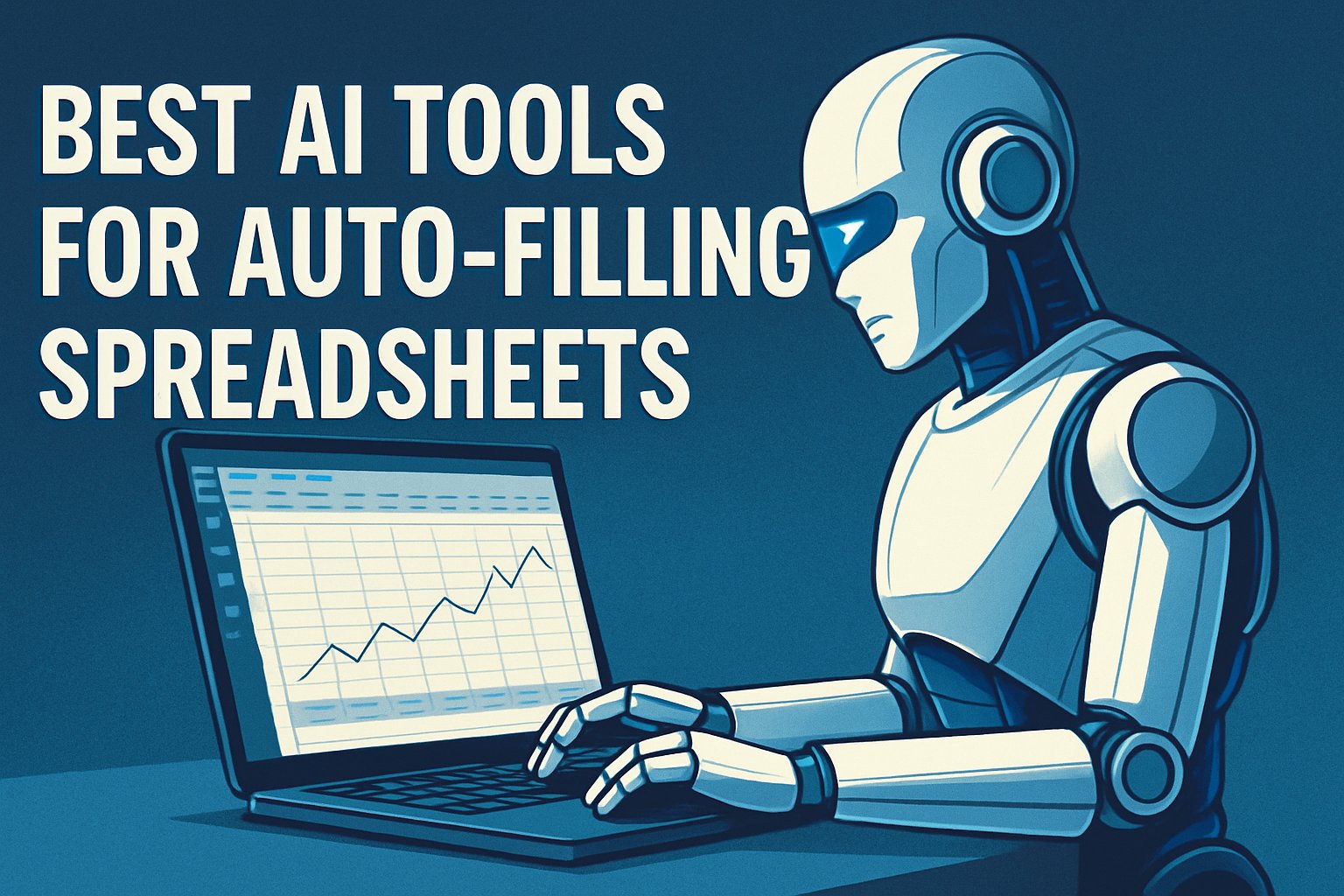
Can AI fill out spreadsheets?
Yes, AI can fill spreadsheets lickety-split by doing the dirty work of entering data column after column, predicting what the hell is supposed to go in a given field, or even spitting out hardcore formulas based on user-friendly prompts.
AI-driven tools can clean, categorize, and standardize data, as well as save hours of work that would take humans to do by hand. Some more sophisticated AI solutions interface with live data sources, such as APIs or CRMs, and populate spreadsheets in real time.
With Excel or Google Sheets, AI tools make spreadsheets smarter, faster, and far more accurate, all of which is particularly helpful for businesses dealing with big data sets or frequent reporting. The systems technology behind all this is changing the way data is architected, analyzed, and shared.
How to Choose the Right AI Tools?
The best AI tool for auto-filling spreadsheets depends on what you want it to do, how technological you are, and how large the job is. Here’s how to decide:
- Define Your Use Case – Are you writing formulas, cleaning data or automating reports? Wondering about specific tools like Excel Formula Bot (for formulas) and DataRails (for finance teams).
- Compatibility – Check that the tool works with your platform of choice, Google Sheets, Excel or both.
- Ease of Use – If you are non-technical, choose no-code tools such as PromptLoop or SheetAI.
- Collaboration & Integration – Require real-time ad-hoc collaboration or data from apps like HubSpot or Stripe? Go with Rows AI or Sourcetable.
- Pricing – Begin with a free version, then graduate to paid plans with the features you truly use.
- Security & Support – Make sure the software is based on data protection laws and has good customer care.
By analyzing tools by these standards, you’ll pick one that doesn’t just fill data, but fills an actual productivity void.
How We Tested These AI Spreadsheet Tools
We tested all tools in an actual real-world business scenario:
- Data Extraction – Pulling info from PDFs, emails, invoices
- Formula Generation – Auto-writing complex Excel functions
- Error Detection – Flagging inconsistencies in datasets
- Integration – Works with Excel, Google Sheets, Airtable
Testing Criteria:
- Accuracy – Correctly interprets unstructured data
- Speed – Processes 1,000+ rows in seconds
- Customization – Adapts to unique spreadsheet formats
- Pricing – Free vs. enterprise plans
11 Best AI Tools Auto-Filling Spreadsheets
1. SheetAI (Best for Google Sheets AI-Powered Assistance)
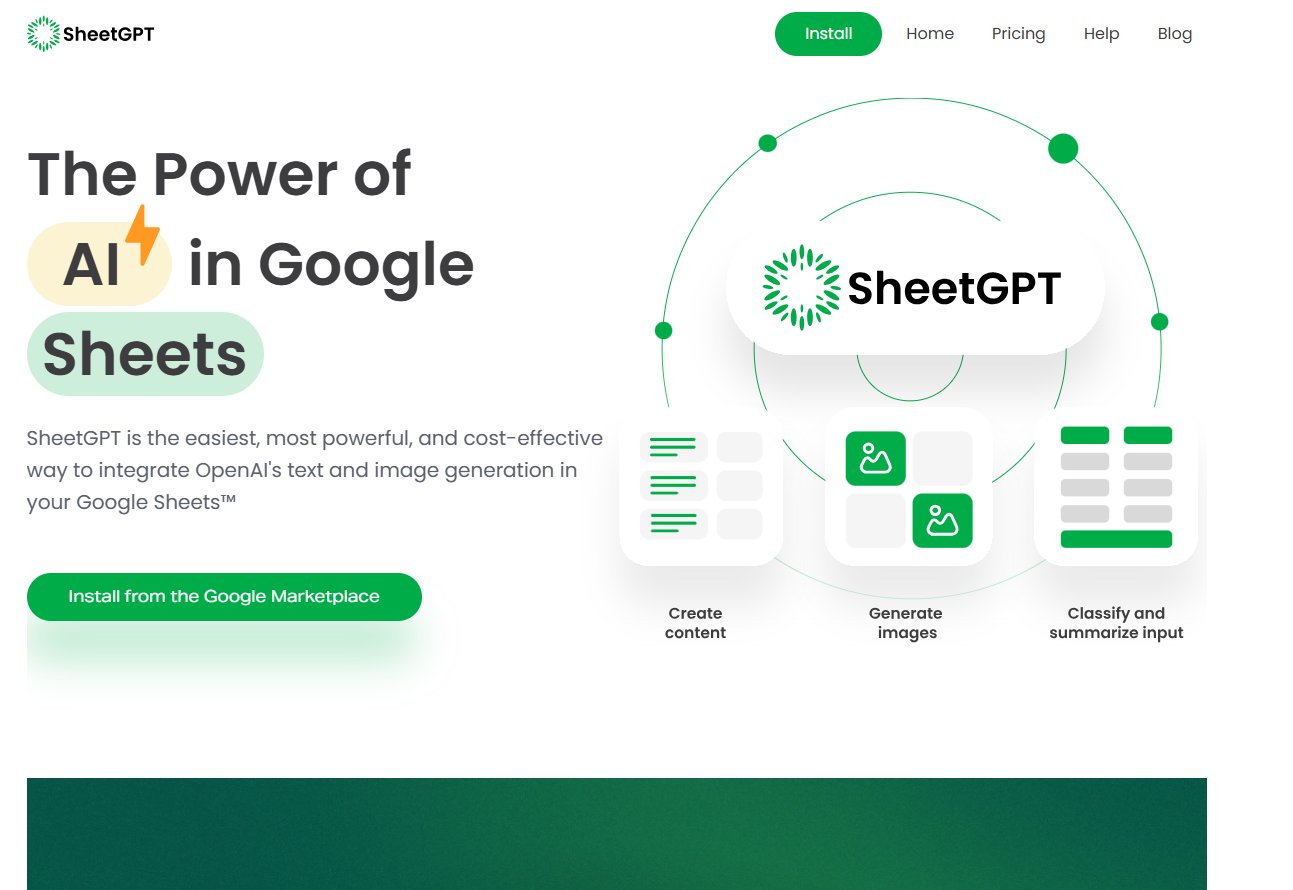
SheetAI is a powerful AI-powered extension for Google Sheets that allows you to perform complex spreadsheet operations with human-like language inputs.
It changes the way that data analysts, marketers, and small businesses work inside Sheets by automatically generating formulas for them, auto-summing data based on context, auto-collecting for cells, and at times making data-driven decisions, all using the power of AI.
Standout Feature: Advanced users can also plug in custom-trained data models via the =SHEETAI_BRAIN() function to customize spreadsheet behavior. For instance, say you segment customers or forecast the ad spend according to the performance data, then the feature learns your style and automates just the way you do it.
Used by: Marketers, data analysts, content teams, and startup founders.
Pricing: Free plan available; Paid plans start at $29/month.
Why it’s useful: SheetAI takes ChatGPT-level intelligence to your spreadsheet interface. Instead of losing valuable time Googling formulas or debugging VLOOKUPs, you can just say: “Highlight leads from the US with revenue of more than $1,000,” and let AI do it for you.
Use case: Great for Excel-based customer segmentation, dynamic budget forecasting, and coding-free marketing performance dashboards.
2. PromptLoop (Best for No-Code AI Spreadsheet Workflows)
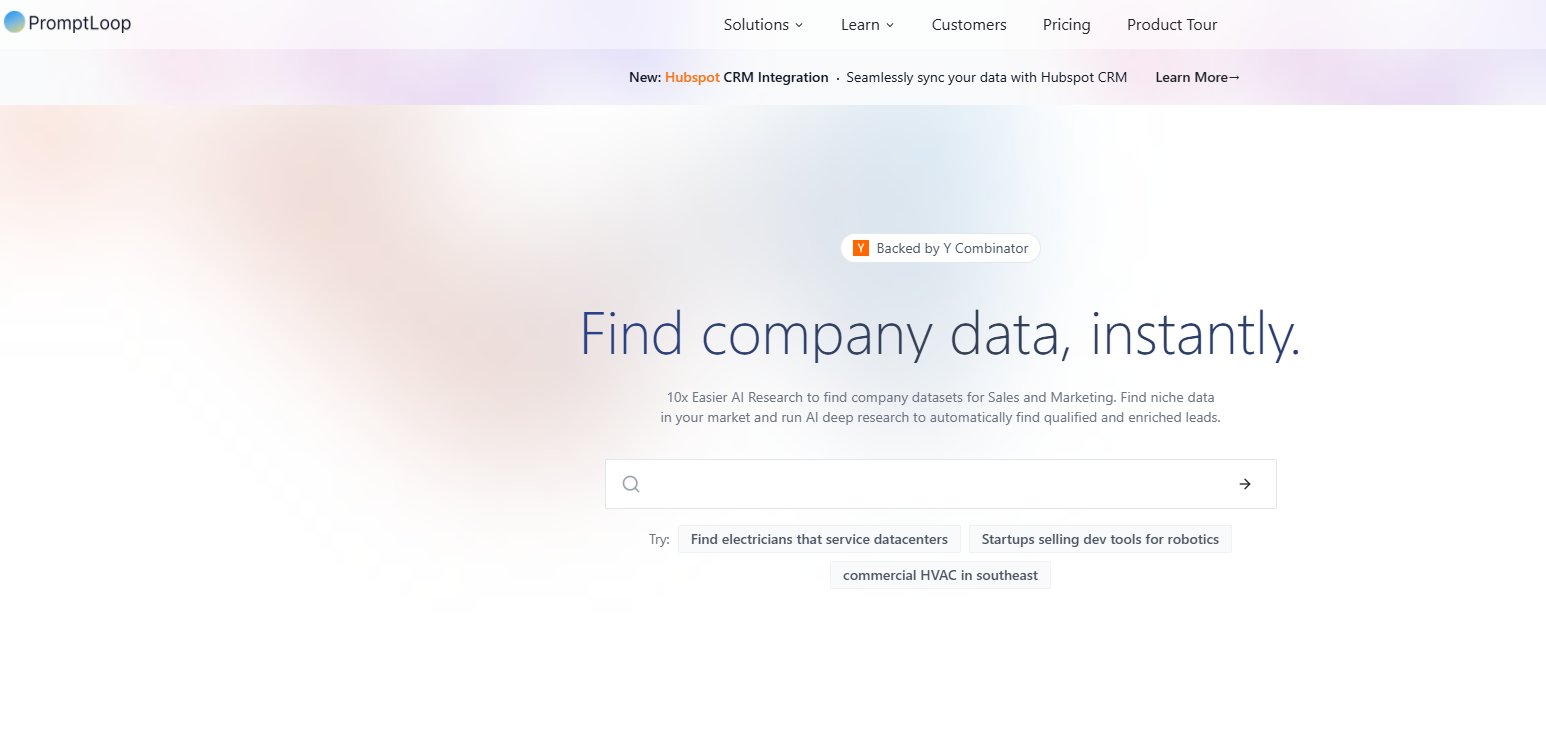
With PromptLoop, you can implement AI directly into your Excel and Google Worksheets with GPT-like features. It’s great for classifying data, summarizing responses, structuring the free-form text, and predicting values, all by specifying formulas of the form =PROMPTLOOP().
Standout Feature: Its workflow builder lets you chain together multiple steps, cleaning, categorizing, and flagging, without code. It is very suitable for a dynamic business data environment, so the data in the business also changes frequently.
Used by: Ecommerce marketers, SEO teams, sales ops, real estate analysts.
Pricing: Free tier available; Pro plan at $350/month.
Why it’s useful: If you need to automate repetitive spreadsheet tasks such as lead enrichment, content scoring, keyword clustering, or deal qualification, PromptLoop is one of the best options. You can create custom AI prompts and use them on other sheets.
Use case: Sort thousands of product descriptions by topic, auto-assign sales stages based on notes, or score resumes to a job description in seconds.
3. Rows AI (Best for Collaborative Spreadsheet AI)
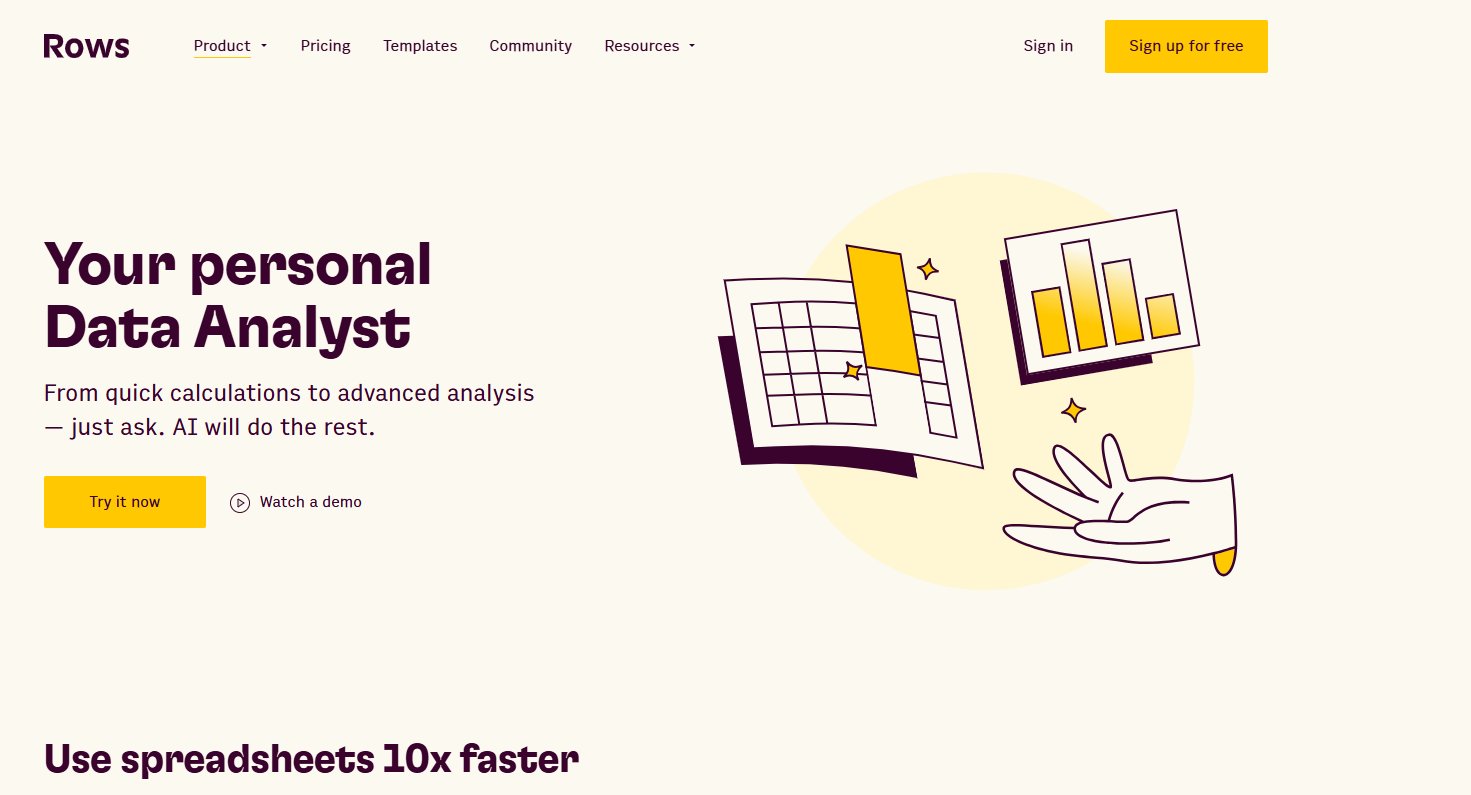
Rows is an all-in-one spreadsheet that marries standard tables with real-time data integrations, API pulls, and AI analysis. It provides teams who need both BI dashboards and spreadsheet-like flexibility with a smart, intuitive interface.
Standout Feature: Its AI assistant can respond to questions about your data in plain English and build new sheets based on those questions, such as “Create a quarterly report from last month’s HubSpot leads.”
Used by: Product teams, growth marketers, SaaS founders, agencies.
Pricing: Generous free tier; Paid plans for business users.
Why it’s useful: Great for distributed teams looking at live business data from Stripe, HubSpot, Airtable, or Notion. No more CSV exports, let Rows automatically populate your metrics and reports in one click.
Use case: Create a content performance dashboard that auto-pulls traffic, engagement, and ROI; no scripts are needed.
4. Excel Formula Bot (Best for Formula Generation)
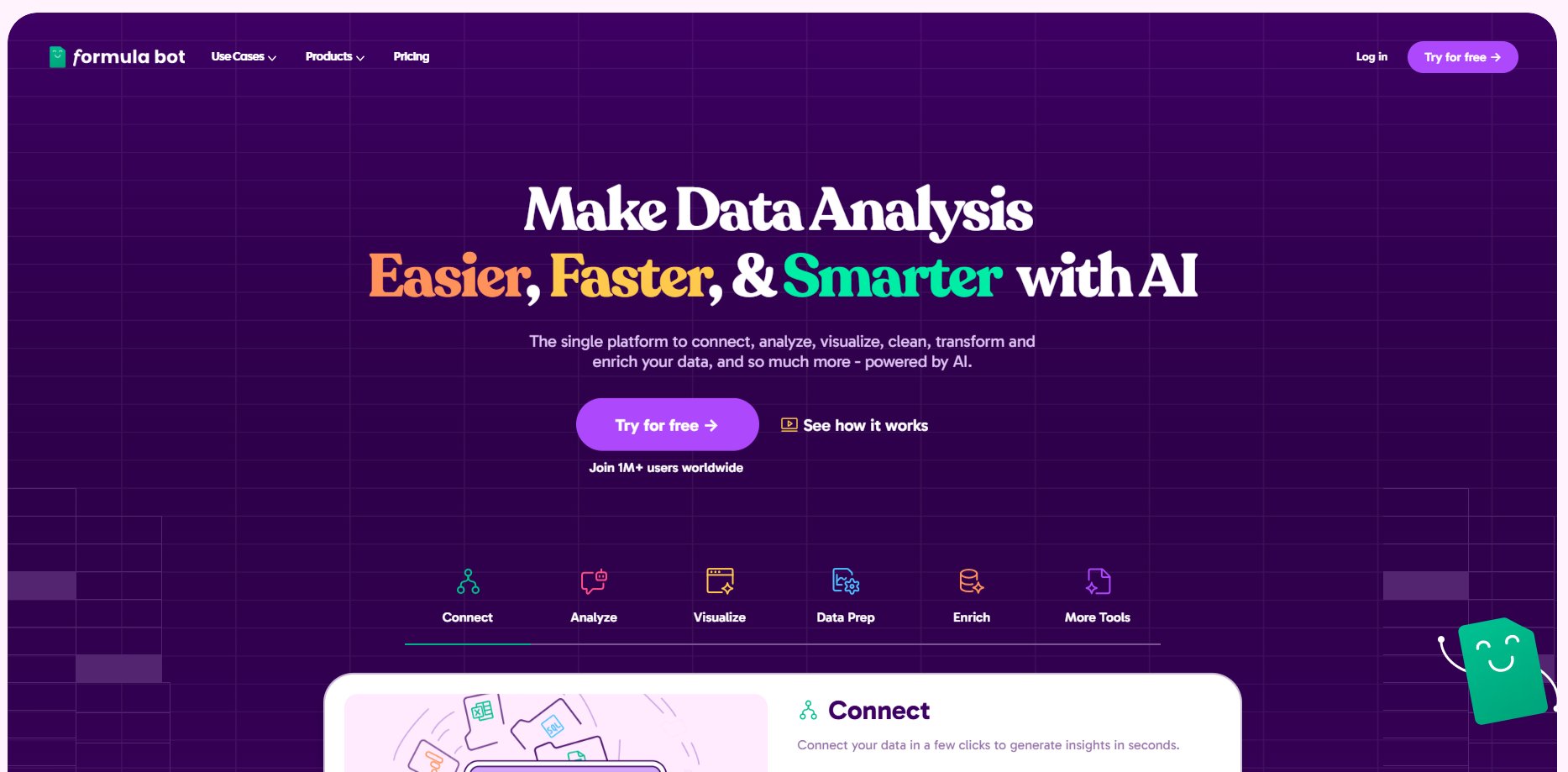
Excel Formula Bot is your Personal AI Tutor for Excel and Google Sheets. Just type what you need in human language, and it figures out the right formula, pronto. You can also reverse-engineer complicated formulas to see what they’re doing.
Standout Feature: Its “Explain this formula” function helps demystify nested IFs, INDEX/MATCH combos, and regex syntax — saving hours for beginners and pros alike.
Used by: Financial analysts, accountants, students, HR teams.
Pricing: Free basic access; Pro plan at $15/month.
Why it’s useful: A lifesaver if you’re not an Excel whiz. Whether data cleaning, conditional logic, or payroll, Excel Formula Bot takes out the guesswork.
Use case: Do you, say, have to calculate employee bonuses, taking into consideration three different variables? Just type your logic and let AI build it on the fly.
5. DataRails (Best for Finance & FP&A Teams)
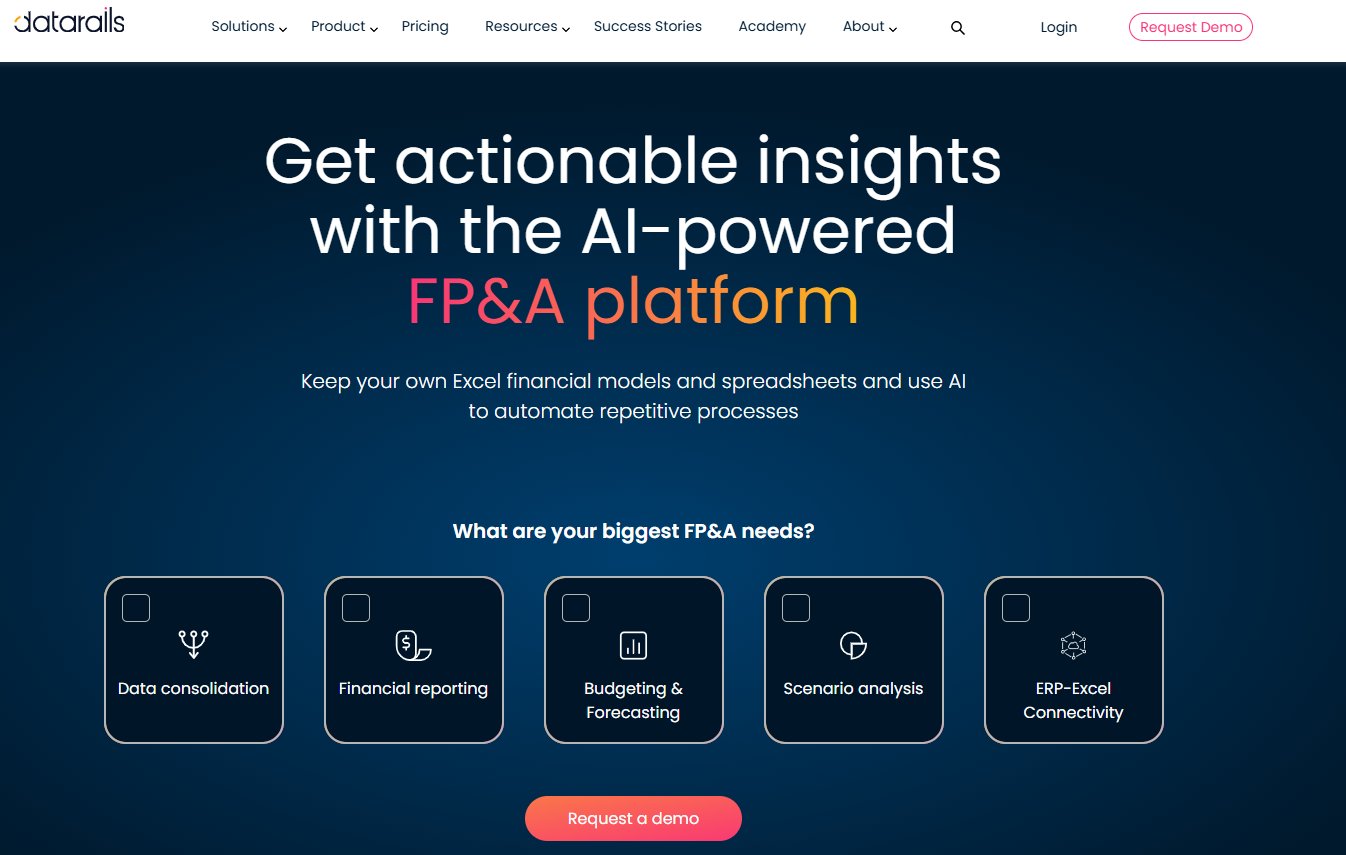
DataRails is a robust FP&A software designed around spreadsheets. It automatically pulls in real-time data from ERPs, CRMs, and Excel files, and leverages AI to produce forecasts, identify outliers, and create C-suite-ready reports.
Standout Feature: Auto-generates financial variance reports and board decks by pulling data directly from different departments, entirely aligned and accurate.
Used by: CFOs, finance directors, and multi-department organizations.
Pricing: Custom enterprise pricing.
Why it’s useful: If your company handles millions in revenue or costs, manual spreadsheet work is risky. DataRails automates and governs your Excel-based processes without making you give up the tool.
Use case: Generate forecasts on a quarterly basis automatically from historical data, departmental inputs, and real-time sales.
6. SheetGod by Tability (Best for Workflow Automation)
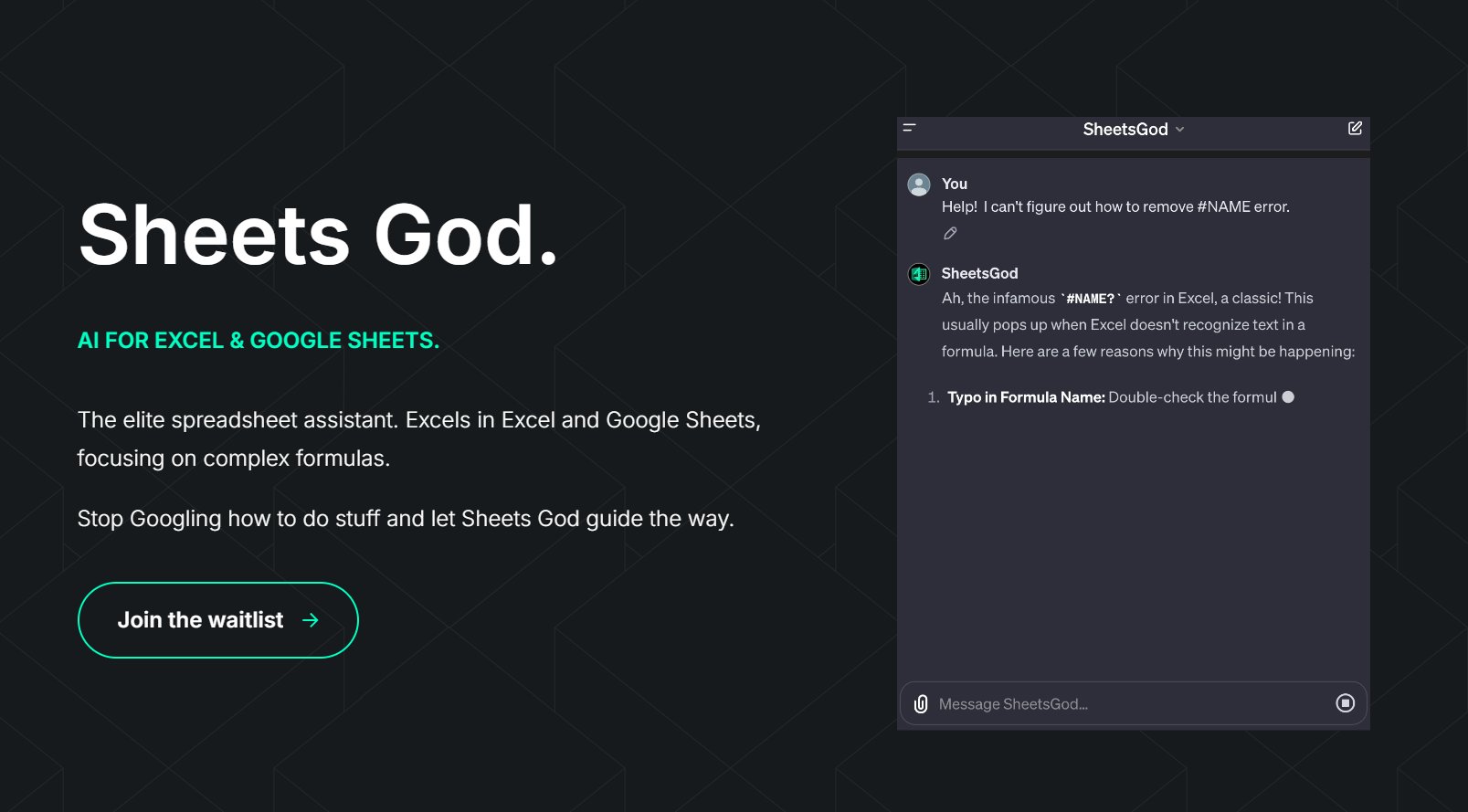
SheetGod is an AI productivity app that automatically writes Google Apps Script code, complex formulas, and even charts with natural language input.
Standout Feature: The task automation package allows scheduling of reports, email exports and also auto-updating of dashboards triggered by time deadlines.
Used by: Startups, operations managers, project teams.
Pricing: Free for simple use; Paid tier available.
Why it’s useful: Brilliant for organisations that need repeat spreadsheet actions automated but don’t have programming skills. If it takes a weekly dashboard of yours to be updated from five places, SheetGod can handle it in one click.
Use case: Automate monthly performance reports that extract KPIs, create visualizations, and send out PDF snapshots to stakeholders.
7. Ajelix (Best for Visual Formula Builder)
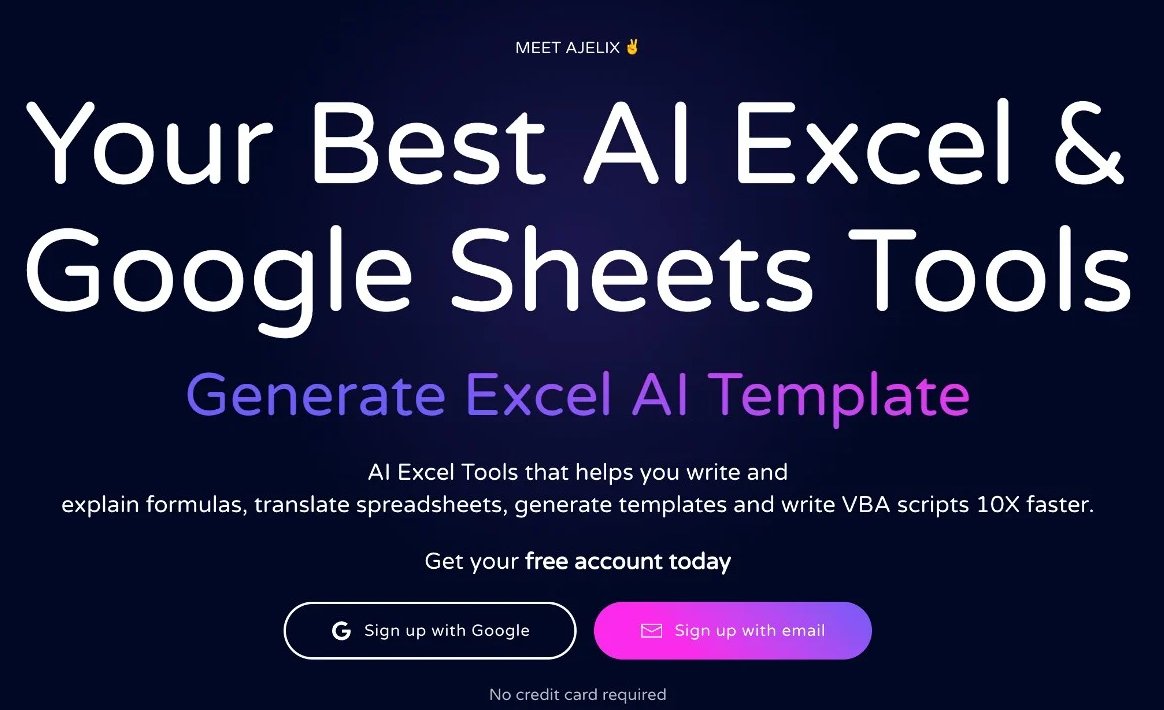
Ajelix is a formula generator, script translator, and dashboard designer powered by AI. They provide a visual formula editor that lets you drag and drop logic elements around; no typing of nested functions required.
Standout Feature: It supports Excel, Google Sheets, and VBA, and it is perfect for hybrid teams or Excel power users with legacy scripts.
Used by: Educators, IT departments, Excel learners.
Pricing: Free but paid version available
Why it’s useful: It turned to build complex formulas and macros into something easy to draw a flowchart. You can also translate your formula into 26 languages.
Use case: With visual logic, design a tax deduction calculator and export it as a shareable tool for HR teams.
8. ChatGPT (Best for Versatile Spreadsheet Help)

It’s not a spreadsheet tool, but ChatGPT works so well to auto-generate formulas and workflows and debug complex logic in Excel and Google Sheets.
Standout Feature:
You can make creative prompts such as:
- “Write a formula that will indicate cells that are over the average.”
- “Create a Google Apps Script that emails overdue leads.”
Used by: Everyone, from students and freelancers to corporate finance teams.
Pricing: Free version; GPT-4 access via ChatGPT Plus at $20/month.
Why it’s useful: With the right prompts, it is a universal spreadsheet assistant. In a few words, you can create a complete tracking template with dynamic columns.
Use case: Systemize follow-ups with sales leads, create custom invoice templates, and automatically analyze data.
9. SheetAI App (Not to be confused with SheetAI)
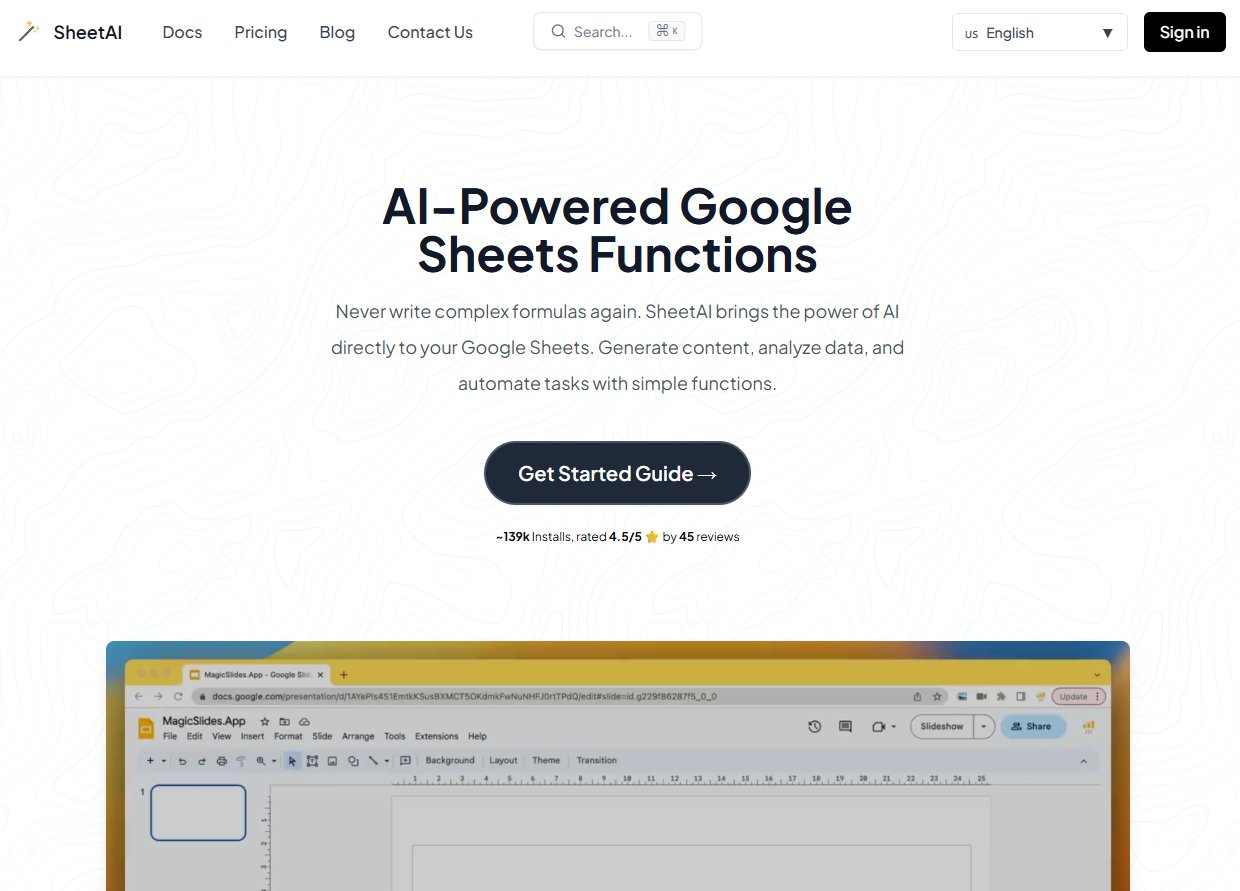
SheetAI App is a text-data assistant in Google Sheets. It’s useful for mass cleaning, rephrasing, formatting spreadsheet data, changing varying names to a single form, standardizing addresses, and more. Also, it is one of the best free AI tools for auto-filling spreadsheets that increase your productivity.
Standout Feature: It has the “fill gaps“ logic to intelligently predict missing information on the basis of the surrounding rows.
Used by: Survey analysts, market researchers, students.
Pricing: Free for basic usage.
Why it’s useful: This tool can batch-process cleanups for messy data entries, like feedback forms, contact lists, or survey responses, without formulas.
Use case: Fix minute problems such as misspellings and date format, or even fill in the state field with the city.
10. Sourcetable AI (Best for Real-Time Data Auto-Filling)
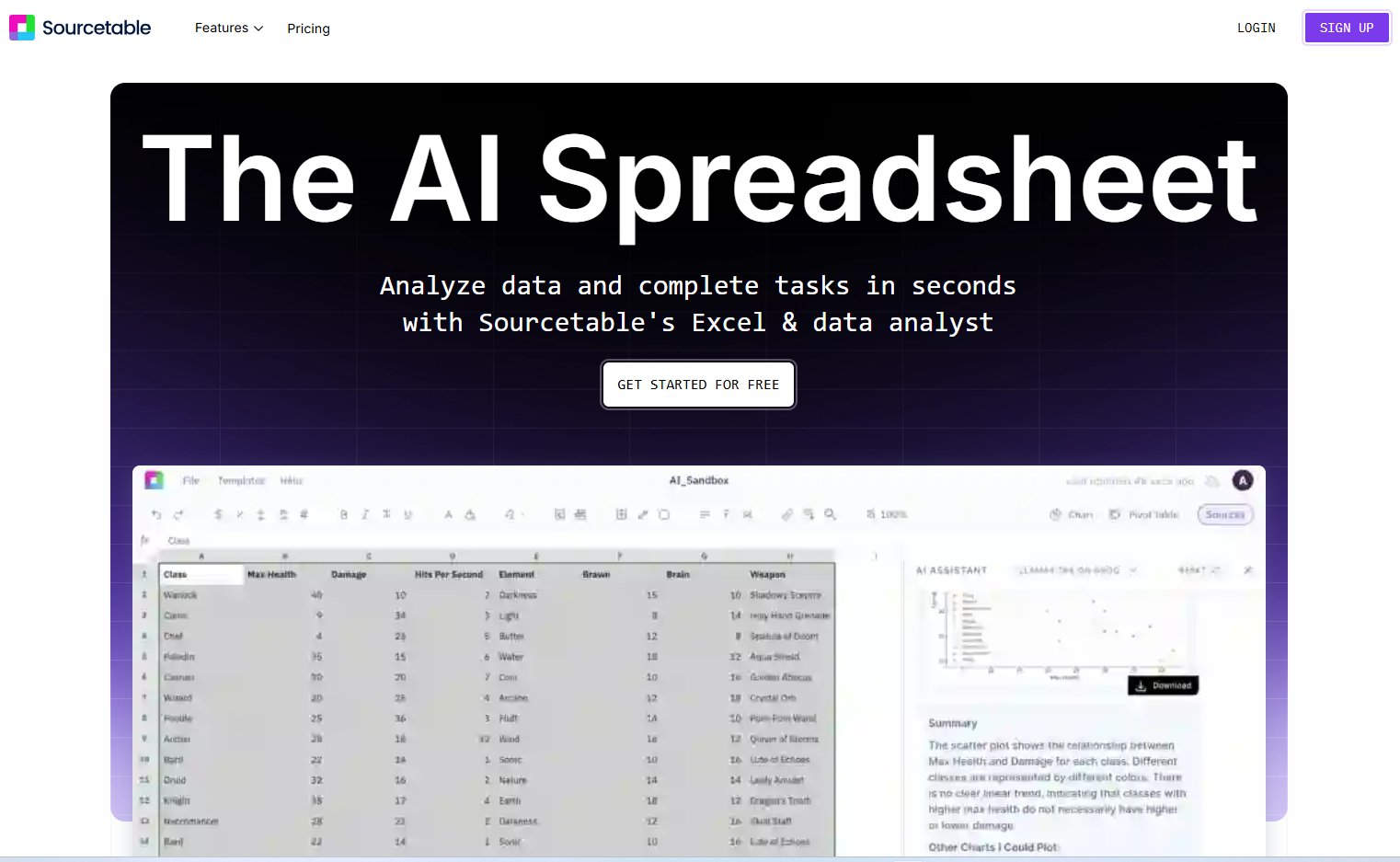
Sourcetable can turn your spreadsheets into a live database, automatically pulling data from tools such as Google Ads, Stripe, Mailchimp, Salesforce, and over 100 more types of data.
Standout Feature: With its AI assistant, you can ask, “What’s the average CPC for last quarter?“ and receive a table + chart instantly.
Used by: Growth marketers, startup teams, business analysts.
Pricing: Custom pricing for teams.
Why it’s useful: Great for people looking for real-time dashboards without having to build an entire data pipeline. You can roll up marketing, sales, or ops performance metrics without any manual exports.
Use case: See CAC vs LTV right now with your CRM, ad platform, and Stripe data, which are updated automatically.
11. MonkeyLearn (Best for Text Classification in Sheets)
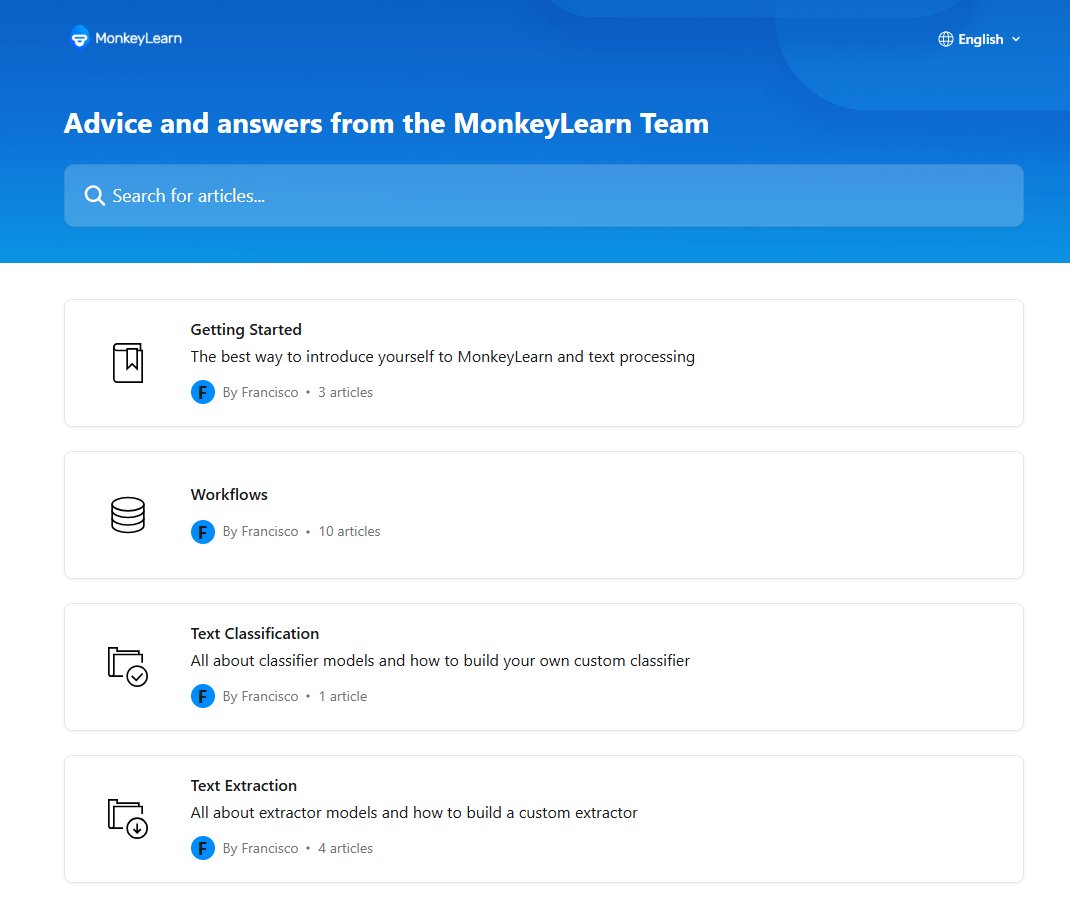
MonkeyLearn is used to automatically categorize text data from within spreadsheets with cutting-edge AI models. It can even identify sentiment (positive vs. negative tone), topic, urgency, intent, and much more across volumes of data.
Standout Feature: Drag-and-drop model training + direct Google Sheets integration.
Used by: Customer support teams, UX researchers, product managers.
Pricing: Free trial available; Paid plans scale with usage.
Why it’s useful: Great for analysing big open-text responses or feedback logs. It makes qualitative data into structural data for analysis.
Use case: Categorize the 5,000 customer support tickets you just received by urgency and escalate high-priority cases at scale.
Common AI Spreadsheet Mistakes
- Assuming 100% accuracy – Always spot-check 5% of rows.
- Ignoring privacy – Avoid uploading sensitive data to cloud tools.
- Over-automating – Some tasks still need human judgment
People Also Ask: FAQs
1. Can AI extract data from scanned PDFs?
Yes. Excel AI and Nanonets turn scanned invoices/receipts into sheets that can be edited.
2. Which free tool works best with Google Sheets?
Rows AI (natural language) and SheetAI’s free trial (limited rows).
3. How do you auto-fill spreadsheets from emails?
Use Magical AI (Chrome extension) to extract order details from Gmail.
4. Can AI write complex Excel formulas?
GPTExcel generates VLOOKUP, INDEX/MATCH, and macros in plain English.
5. Is there AI for spreadsheet error checking?
Excel AI’s “Error Finder“ and GPTExcel’s debugger explain mistakes.
Conclusion
Nowadays, AI products for auto-filling spreadsheets are not just for tech geeks – they’re even quickly becoming a necessity for everyday workers trying to increase productivity, reduce human error, and eliminate wasted time.
Whether you’re wrangling financial data, scrubbing huge datasets, or building formulas, the correct AI tool can turn hours of manual labour into moments of smart automation.
With user-friendly solutions like Excel Formula Bot and powerful business tools like DataRails and Rows AI, there’s a solution for whatever your level of need.
Closer to the edge as AI becomes more advanced, adopting these tools isn’t just a good idea — it’s the way of the future for efficient, data-driven work.

